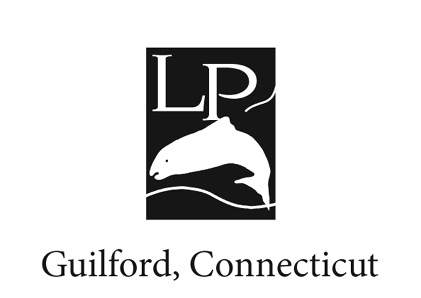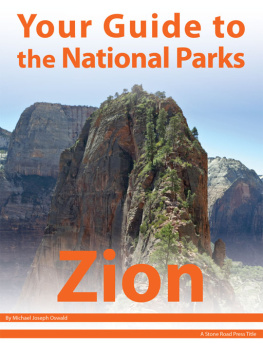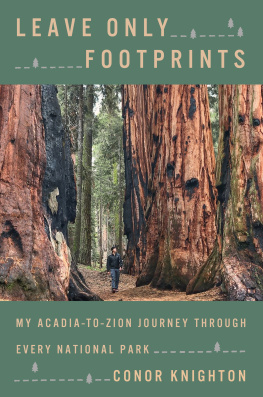Death in Zion National Park
Stories of Accidents and Foolhardiness in Utahs Grand Circle
Randi Minetor


An imprint of Globe Pequot
Distributed by NATIONAL BOOK NETWORK
Copyright 2017 Rowman & Littlefield
All rights reserved. No part of this book may be reproduced in any form or by any electronic or mechanical means, including information storage and retrieval systems, without written permission from the publisher, except by a reviewer who may quote passages in a review.
British Library Cataloguing in Publication Information Available
Library of Congress Cataloging-in-Publication Data Available
ISBN 978-1-4930-2893-1 (paperback)
ISBN 978-1-4930-2894-8 (e-book)
 The paper used in this publication meets the minimum requirements of American National Standard for Information SciencesPermanence of Paper for Printed Library Materials, ANSI/NISO Z39.48-1992.
The paper used in this publication meets the minimum requirements of American National Standard for Information SciencesPermanence of Paper for Printed Library Materials, ANSI/NISO Z39.48-1992.
Printed in the United States of America
Contents
Preface
This book details the ninety-two deaths that have taken place in Zion National Park, as well as some near-death experiences included to illustrate the kinds of hazards this park presents to the adventurous visitor. Most of these incidents have taken place since the park achieved federal protection as Mukuntuweap National Monument in 1909, and as Zion National Park in 1919. This is not surprising, as the parks popularity has increased steadily since that time to record attendance of 4,317,028 in 2016.
There may actually be more than ninety-two people whose deaths took place in the park, but the media and other sources do not always make note of people who happened to die of natural causes during their visit. If it appears I have missed the passing of your loved one, please feel free to get in touch with me at to provide any factual information you may have available. I will be sure to include it in the books next edition.
As you read this book, please keep in mind that while more and more people visit Zion every year, on average only one to two people per year actually perish while at the park. The news in recent years included one incident in 2015 that took the lives of seven people, and pairs of climbers or hikers sometimes meet death at the same time, but the overall number of fatal incidents remains low. Please do not take this collection of stories as any indication that you should not visit this extraordinary park. See these instead as opportunities for you to learn the best and most effective skills for approaching any trail, rock face, river, road, or tunnel in Zionand in any other wilderness area. Death in Zion National Park should serve as reinforcement of the basic rules of safety recommended to every visitor by the National Park Service. (Ive collected these guidelines and survival tips and included them in the epilogue of this book.)
Zion National Park is my favorite of all the national parksand as of this writing, I have visited 306 of the 417 units of the National Park Service, so I have some significant basis for comparison. I urge you to visit this park, explore its winding trails, discover its hanging gardens and slot canyons, ride the scenic roads in a car or on a bicycle, and gaze at the magnificent views of stratified red sandstone towering two thousand feet above the canyon floor. You will see no landscape on earth to rival this one, so make the most of your visit by venturing into its concealed areas, from the splendor of Refrigerator Canyon to the power of the eighty-foot waterfall at Upper Emerald Pool. Any wilderness area presents some risks, but when you take a few simple safety precautions and heed the advice of the parks rangers, your visit will be filled with wonders beyond your imagination.
Introduction: The Perils of the Vertical Vacation
You are about to read of the ninety-two people who arrived at Zion National Park expecting to have the time of their lives but all ended up dead. There is no kinder way to put this, so I want to be as upfront as possible with you about the contents of this book. Its the result of significant research: an extensive review of media coverage, official documents, and other forms of investigation, and my own efforts to discern the facts in each case based on the information available.
All of the stories you are about to read are true, to the best of my ability to determine the truth. In many cases I attempted to retrieve records of police and FBI investigations, using the Freedom of Information Act and Utahs Government Records Access and Management Act (GRAMA) to request aged files. I discovered that Washington County Sheriffs Office records dating back before 1997 are not available, making it quite impossible to determine what conclusions might have been drawn in older cases. Even the FBI did not have records of continuing investigations in deaths that were deemed to have occurred under suspicious circumstances, leaving us with no further clues once the media coverage ran its course. I am sorry to leave my readers with loose ends, but facts are facts, and not all cases could be solved.
Death in Zion National Park also reveals the tremendous search and rescue operations available to the people who visit herethe professionals, volunteers, and regional resources that penetrate the parks most treacherous landscapes to rescue people when they can, and when this is not possible, to bring out the remains of someones loved one and allow the family to achieve closure. I wish I could detail for you the thousands of successful rescues the areas search teams complete: the retrieval of hundreds of people every year who stray off of trails, become lost or injured, or realize in a moment of sudden clarity that they have truly taken on more than they can handle. These visitors come home safely each season thanks to the tireless efforts of these heroes; only a tiny fractionusually fewer than two people per yearlose their lives.
You will find that I have treated these incidents with respect, as I must consider the number of times I myself could have made a wrong turn in the wilderness and ended up just like the people who did not come home. While some of these stories might encourage a snicker behind closed doors and a sense of schadenfreudea superiority to those who wandered off into a slot canyon, for example, and were met with a sixty-foot wall of waterborne debrismost of these accidents and incidents could happen to any of us. Most important, every tale has something to teach us.
The vast majority of these stories illustrate the results of uncommon bad luck: a rock that turned underfoot, a change in the weather just minutes after a party left cellular phone range, a knot not tied at the end of a rope, or a patch of ice in the worst possible place. A few happened because of neglect or foolishness, and a number of incidents took place for the sheer cussedness of attempting thema grit and determination that turned out to be misguided. Perhaps worst of all, a handful were deliberate acts of desperation: three suicides, a fall that led to a murder trial, an unsolved case involving a pool of blood and a bloody backpack, and one death at the end of a night of drunkenness.
If this book encourages you to go to Zion National Park for no other reason than to see the peak of Angels Landing, the windings of the Narrows, the waterfalls of Emerald Pools, the mile-long darkness of ZionMt. Carmel Tunnel, and the depths of Kolob, Keyhole, and Pine Creek Canyons, then I will consider my efforts here a rousing success. Go, if you must, to see where people met bad ends, but stay to savor the views of vermillion cliffs, variegated rock faces, sparkling waters, and parti-colored sunsets. Zion is my favorite of all of Americas national parks, and I am delighted to have this opportunity to invite you to see it for yourself.
Next page










 The paper used in this publication meets the minimum requirements of American National Standard for Information SciencesPermanence of Paper for Printed Library Materials, ANSI/NISO Z39.48-1992.
The paper used in this publication meets the minimum requirements of American National Standard for Information SciencesPermanence of Paper for Printed Library Materials, ANSI/NISO Z39.48-1992.